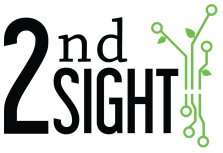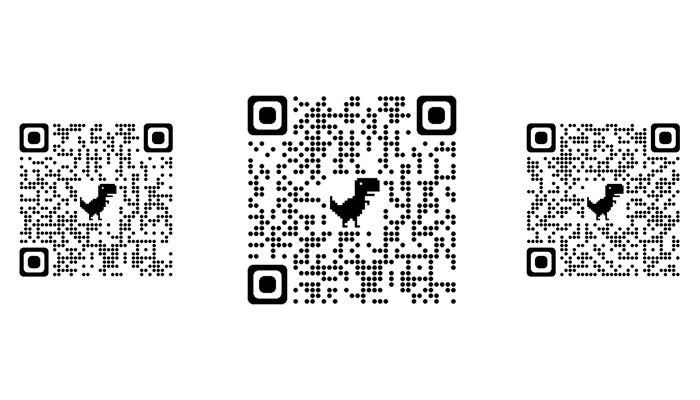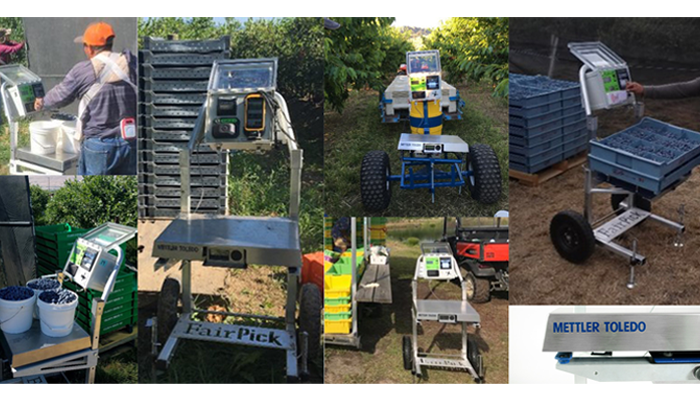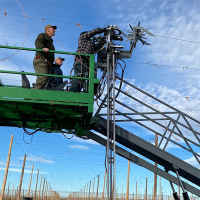Many of our labor and product tracking systems utilize barcodes to track and trace. We often receive questions about whether 2nd Sight provides barcodes, or if there are required barcode specifications. In most cases, our software only requires a unique identifier. However, there are many types of barcodes and it can get overwhelming to choose. Each barcode serves a purpose. Here is a summary of the most common barcode formats and why one type may be better suited for a specific application.
1D Versus 2D
There are two main groups of barcodes, one-dimensional or “linear” and two-dimensional barcodes. A “1D” barcode is what you likely imagine when you hear the word “barcode”. The classic zebra stripe pattern encodes numbers (and in some cases letters and characters) that help identify a specific item or type of item. “2D” barcodes contain many small dots instead of bars and offer more storage potential and even better readability—regardless of printing size.
In specialty crop farming, 1D barcodes are often printed on apple and pear bin tags. The barcode provides a unique number that allows the packing house to identify various information about the crop. These bin tags offer an easy solution to start traceability in the field. When a grower can link the picker to the produce and provide a pick time and date, any issues that may arise down the supply chain can be traced back to the source so that other affected produce may also be identified quickly and accurately. Here are some examples of commonly used 1D barcodes.
UPC
|
Stands for: |
Universal Product Code |
|
Purpose: |
Easily identify an object’s attributes, efficient product tracking |
|
Benefits: |
Widely used |
|
Applications: |
Retail point of sale scanning |
|
Count: |
UPC-A = 12 digits, UPC-E = 6 digits |
EAN
|
Stands for: |
European Article Number |
|
Purpose: |
Easily identify an object’s attributes, efficient product tracking |
|
Benefits: |
Suitable for small locations, fast-scanning |
|
Applications: |
Retail point of sale scanning |
|
Count |
EAN-13 = 13 digits, EAN-8 = 8 digits |
Code128
|
Stands for: |
Use all 128 characters of ASCII (character encoding set) |
|
Purpose: |
Encode large amounts of information (such as serial numbers) |
|
Benefits: |
Compact, high-density, supports digits, letters, and many characters |
|
Applications: |
Logistics, transportation, shipping, and tracking |
|
Count: |
Based on the application, size, and scanner capabilities |
ITF
|
Stands for: |
Interleaved 2 of 5 |
|
Purpose: |
Label packaging materials (cardboard) |
|
Benefits: |
Self-checking code suitable for printing on product packaging |
|
Limitations: |
Can only encode numbers |
|
Applications: |
Many industries, product packaging |
|
Count: |
14 numeric digits |
Code39
|
Stands for: |
Code 3 of 9 |
|
Purpose: |
Label goods |
|
Benefits: |
Utilize both digits and characters, readable by many scanners |
|
Limitations: |
Not suitable for small items |
|
Applications: |
Automotive, government, asset tracking |
|
Count: |
43 characters |
2D barcodes are a newer category of barcodes that offer more data storage and increased readability to keep data scannable—even after being ripped or damaged. At 2nd Sight, we recently released a feature on our InstaCaliper and TallyTrak nursery inventory capture app that utilizes QR Codes to auto populate information. Typically, an operator would search through a drop-down menu to locate the correct field location, row number, and variety. Now, the nursery can follow a specific format to generate QR codes that store this information. The operator can scan the barcode to quickly populate the correct information, saving time and minimizing errors. Here are a few common 2D barcode types:
QR Codes
|
Stands for: |
Quick Response |
|
Purpose: |
Encode a lot of information like web addresses (take a picture of the codes above) |
|
Benefits: |
Versatility, fault tolerance, numeric, alphanumeric, byte/binary |
|
Applications: |
Retail, entertainment, marketing |
|
Count: |
7,089 |
Datamatrix Code
|
Stands for: |
Dots arranged in a square/rectangular pattern (matrix) |
|
Purpose: |
Encode a lot of information on small items, goods, and documents |
|
Benefits: |
Small footprint and readable in low resolution/unideal scanning positions |
|
Applications: |
Electronics, retail, government |
|
Count: |
Numeric = 3116 Alphanumeric = 2335, Binary = 1556 |
PDF417
|
Stands for: |
Portable Data File |
|
Purpose: |
Store huge amounts of data (photos, fingerprints, signatures) |
|
Benefits: |
Versatility, fault tolerance, numeric, alphanumeric, byte/binary |
|
Applications: |
Logistics, government |
|
Count: |
Numeric = 1850, Digits = 2710, Bytes = 1108 |
Newer models of the 2nd Sight rugged handheld computer have built-in barcode readers that capture both 1D and 2D barcodes with a quick press of a button. In the reader configuration, a user can set the reader to register all common (and many uncommon) barcode types. Whether you print your own barcodes or purchase pre-printed barcodes, the first step is to determine if a 1D barcode will be able to hold all the required information. In many cases, a simple sting of numbers is enough to keep an item unique. We also recommend thinking of the proper material on which the barcode will be printed. In many cases, the barcode must be water-resistant, handle cold temperatures, and hold up to a bit of wear and tear.



